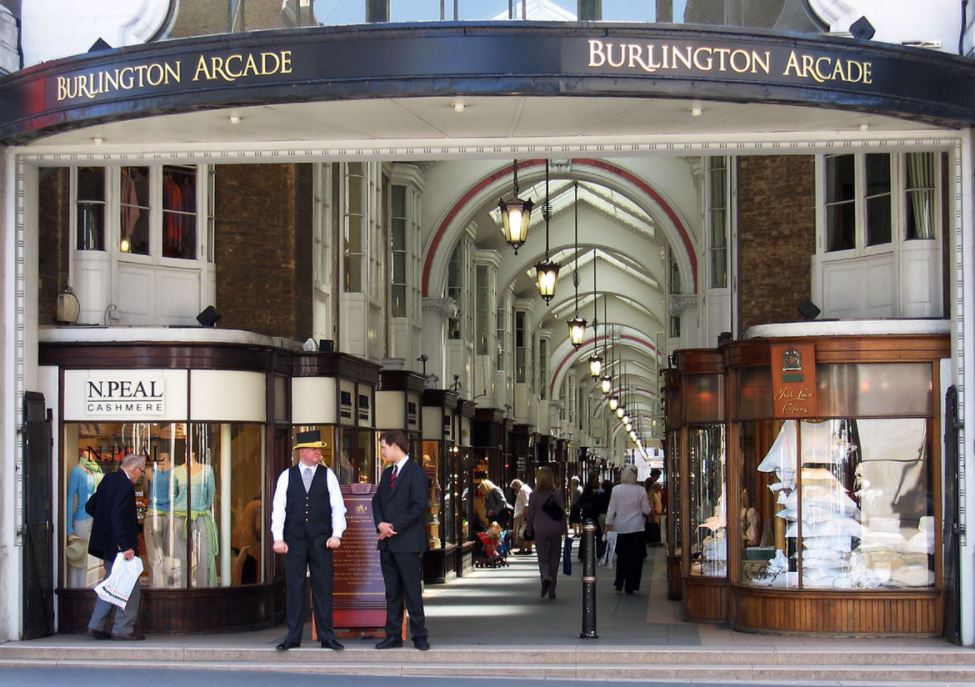London was founded as Londinium by the Romans nearly 2,000 years ago and has been one of the most important cities in the world ever since.
Built on the banks of the River Thames, it was the biggest city in the world for extended periods. It’s home to nearly 9.5 million inhabitants in its metropolitan area today.
The city combines numerous historical buildings with modern architecture, and in this post, we’ll take a closer look at the 26 most famous buildings in London.
1. Tower of London
The Tower of London is officially known as “Her Majesty’s Royal Palace and Fortress of the Tower of London” and was one of the first castles in England to be constructed after the Norman Conquest in 1066.
The castle was named for its infamous White Tower, a prime example of Norman architecture in England.
The location of the Tower of London is right at the eastern edge of the City of London, the historical center of the city also referred to as “The Square Mile.”
It served as a royal residence initially and has also been used as a prison from the 12th century until halfway through the 20th century.
The complex consists of multiple buildings and is surrounded by two rings of defensive walls.
Numerous famous people have been locked up here, especially in the 16th and 17th centuries, including Elizabeth I before she became the Queen of England.
Right now, the Tower of London is one of the most famous buildings in the city.
Official website: Tower of London
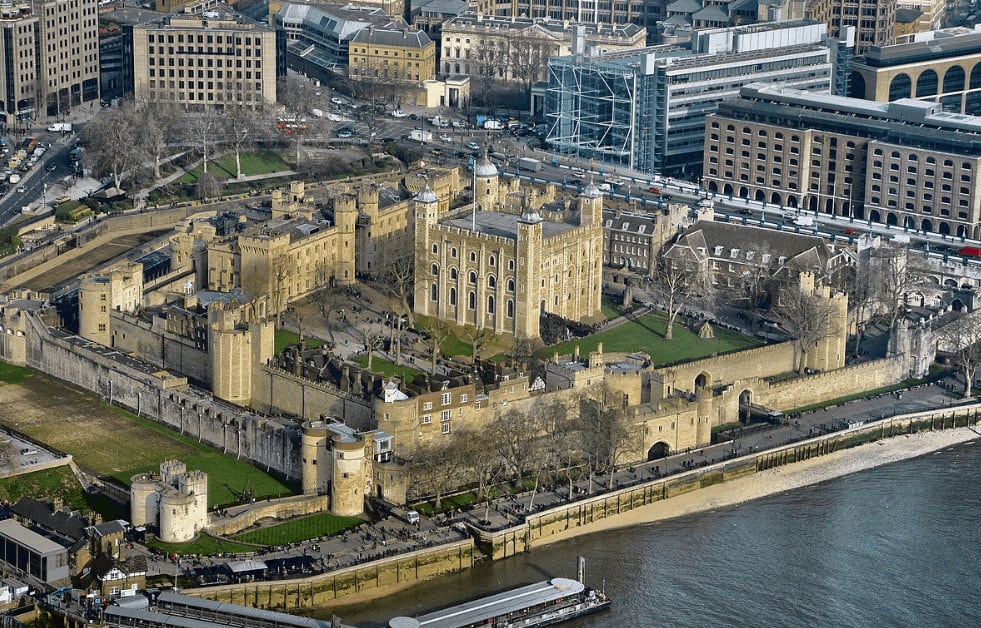
2. Buckingham Palace
Buckingham Palace is the official residence and administrative headquarters of the monarchy of the United Kingdom.
The amazing palace is located in the City of Westminster, just west of the historical center of the city, the City of London, and directly east to the boroughs of Kensington and Chelsea.
The original building was known as the “Buckingham House” and was built for the Duke of Westminster in 1703.
It wasn’t until the year 1761 that it became Crown Property when King George III bought it for his Queen Charlotte. it was then referred to as “The Queen’s House.“
It was enlarged with 3 extra wings in the 19th century and became the official royal residence on the accession of Queen Victoria in 1837.
The palace has a total of 775 rooms and the largest garden in London. The State Rooms are sometimes open to the public, and when they are, they are one of the must-visit attractions in London.
Official website: Buckingham Palace
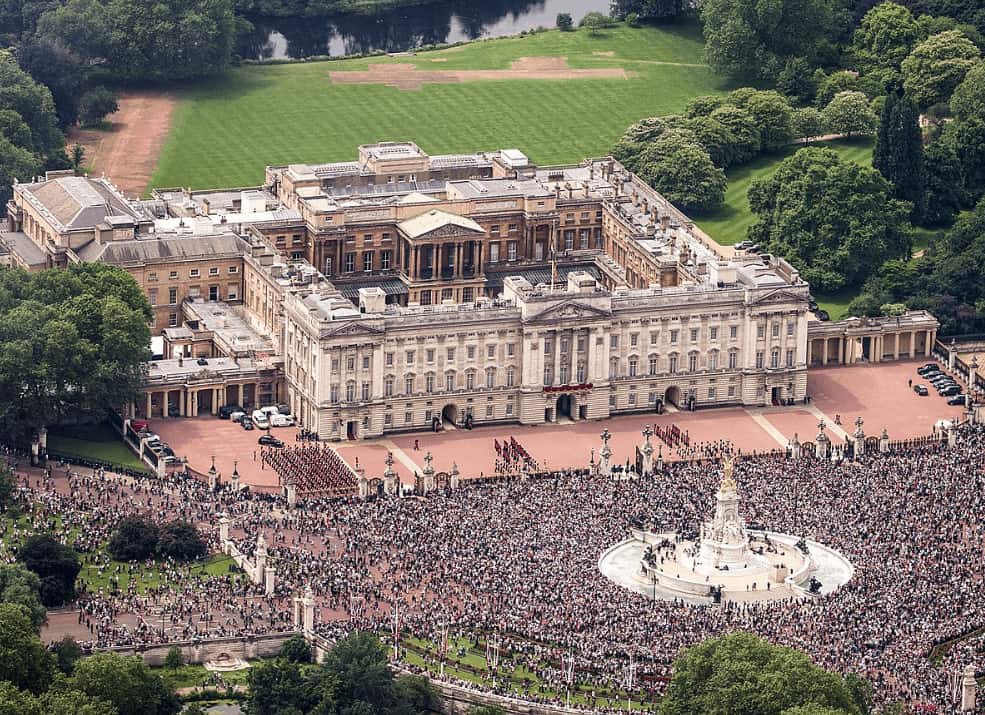
3. Palace of Westminster
The Palace of Westminster is the main meeting place for the parliament of the United Kingdom.
This includes both the House of Commons and the House of Lords. It lies on the north bank of the River Thames in the City of Westminster, just to the west of the City of London, right in the center of London.
The Westminster Bridge connects the City of Westminster with Southwark just near the complex.
The history of the building dates back to the 11th century when a royal palace was built in its location.
It served as the primary residence for the Kings of England since then. It has served as the main meeting place of the Parliament since the 13th century.
The buildings were destroyed by a fire in 1512, were rebuilt only to be destroyed again by a much more severe fire in 1834 with only a few medieval buildings surviving.
The building was completely rebuilt in the Gothic Revival style between 1840 and 1876 and is without question one of the most iconic buildings in London.
Official website: UK Parliament
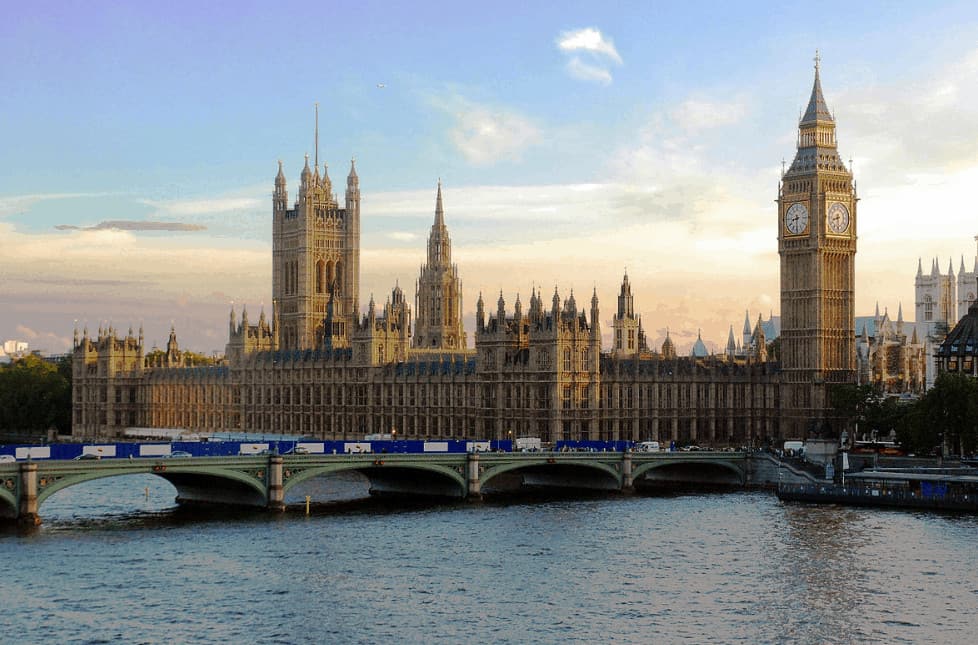
4. Big Ben
Big Ben is the nickname of the big bell inside the clock tower located on the north end of the Palace of Westminster.
Many people refer to the entire clock tower as “Big Ben” as well.
The clock tower is one of the most famous landmarks in London and has become a symbol of the city.
It was designed by Augustus Pugin in the neo-Gothic style that the entire Palace of Westminster was constructed in. The tower was completed in the year 1859.
It’s not really sure how the biggest of the 5 bells inside the clock tower got its name.
Some suggest it was named after Sir Benjamin Hall, who oversaw its installation, others claim it was named after 19th-century heavyweight boxing champion Benjamin Caunt.
Official website: Big Ben
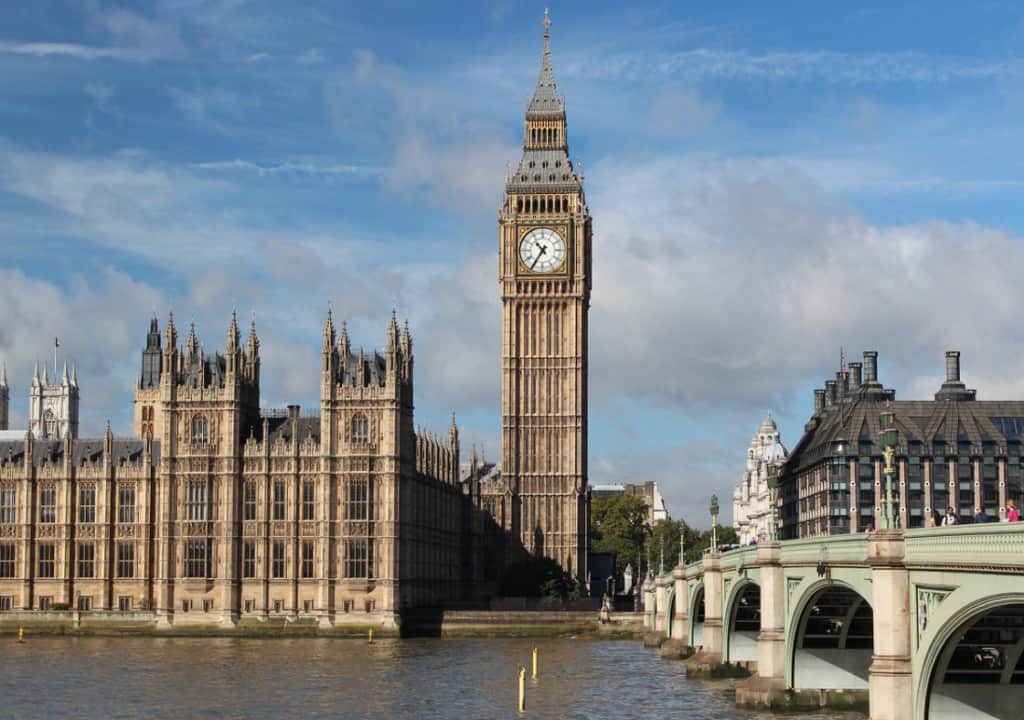
5. Westminster Abbey
Westminster Abbey is yet another famous historical building in the City of Westminster.
It’s located just west of the Palace of Westminster and is one of the most important churches in the United Kingdom.
The existence of a church in the area goes back to the 7th century at the time of Mellitus, a Bishop of London.
The construction of the current building started in the year 1245, on the orders of King Henry III.
It was the coronation place for William the Conqueror in 1066 followed by all English and British monarchs that followed him.
One of the most remarkable facts about Westminster Abbey is that it only had the status of a cathedral between 1540 and 1556.
After that, it has had the status of a Church of England “Royal Peculiar,” a church responsible directly to the sovereign.
Official website: Westminster Abbey
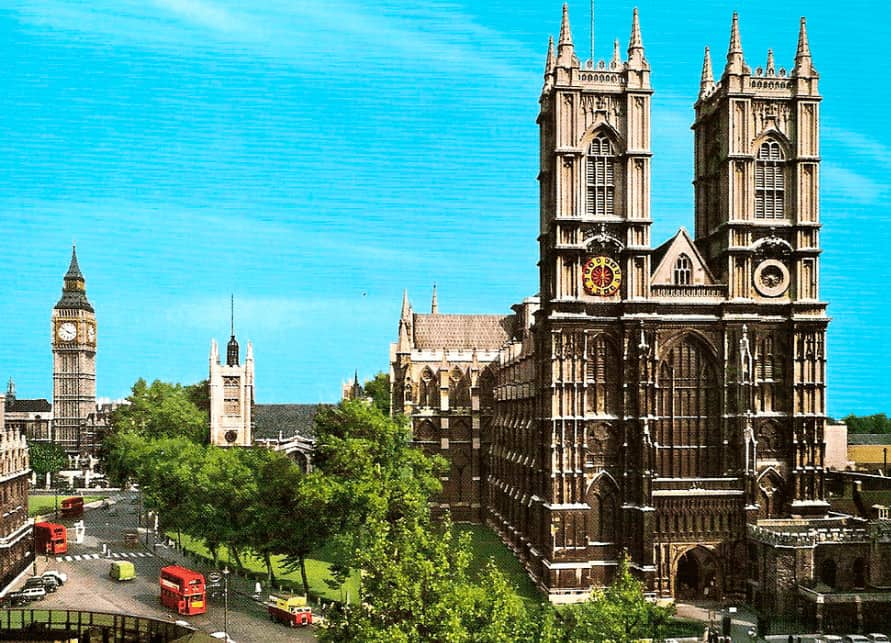
6. Trafalgar Square
Trafalgar Square is one of the most famous squares in all of London and is located in the City of Westminster as well.
It has been built around an area that historically has been known as “Charing Cross” and was completed around 1840.
It was built to commemorate the important victory in the “Battle of Trafalgar,” a naval battle fought in 1805 and won by the British over the French and the Spanish during the Napoleonic Wars.
It was named after Cape Trafalgar in the southwest of Spain where the battle was fought.
The square is a popular gathering place for demonstrations and other gatherings and is decorated “Nelson’s Column,” a monument dedicated to Admiral Nelson who died at the Battle of Trafalgar.
It stands 169 feet (52 meters) tall and is guarded by 4 lions, making it one of the most famous tourists spots in the city that you have to see.
Official website: Trafalgar Square
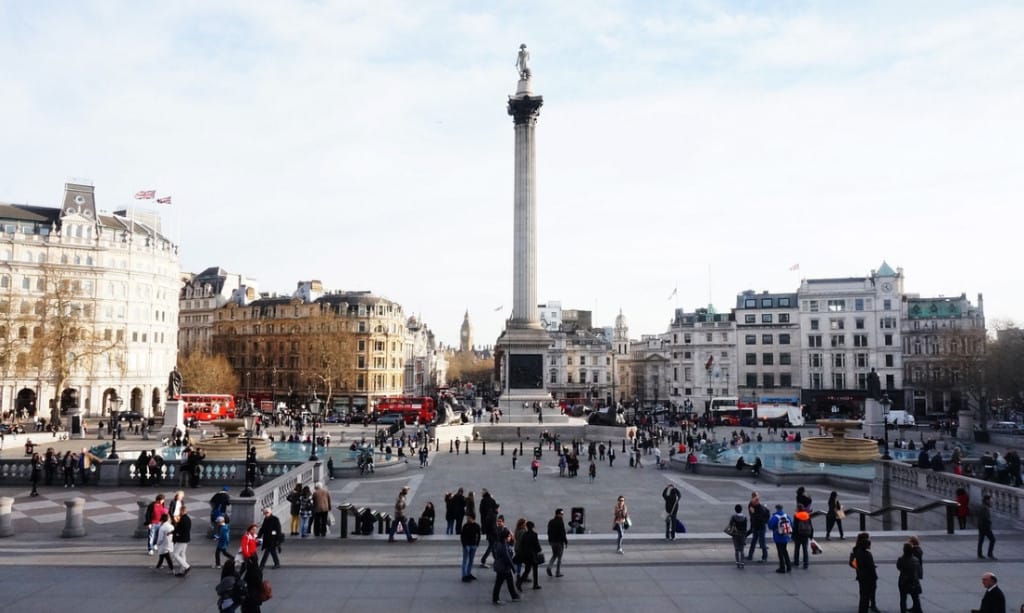
7. Tower Bridge
Tower Bridge is the most iconic bridge in London. It’s a bascule and suspension bridge and spans the River Thames, close to the Tower of London from which it got its name.
It connects the City of London, the historical center of the city with Southwark.
Even though it’s the most famous of all bridges in London, it’s not the oldest and not to be confused with the nearby “London Bridge,” a bridge that was originally built by the Romans who founded the city.
The bridge has two iconic bridge towers which are tied together with horizontal walkways that can be visited.
The bridge was opened in the year 1894 and was built in the Gothic style to give it a similar appearance to the nearby Tower of London.
Official website: Tower Bridge
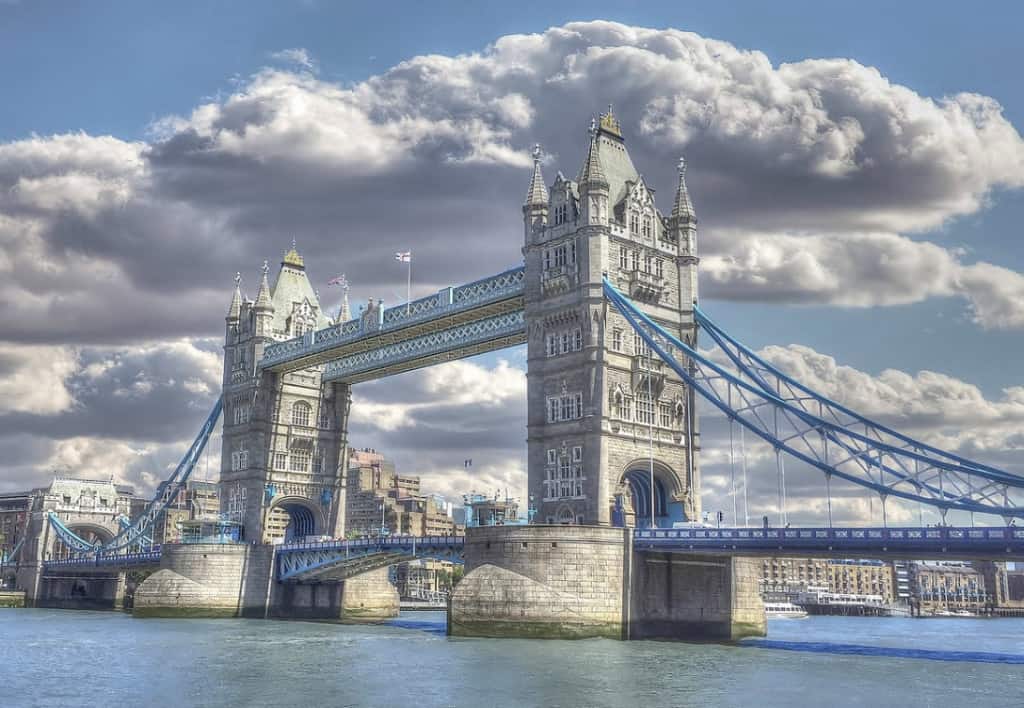
8. St Paul’s Cathedral
St Paul’s Cathedral serves as the mother church of the Diocese of London and is the cathedral of the Bishop of London.
The original church on the site was founded way back in the year 604 A.D. and was dedicated to Paul the Apostle after who the church was named.
The construction of the current Baroque building started in the year 1675 and was completed in 1697.
It was designed in the English Baroque style and as part of the restructuring plan of the city after the Great Fire of London in 1666.
The cathedral is still operative today and has daily services and hourly prayers.
It has been the site of the funerals of Admiral Nelson, the Duke of Wellington, Winston Churchill, and Margaret Thatcher, as well as the wedding of Prince Charles and Lady Diana Spencer.
Official website: St Paul’s
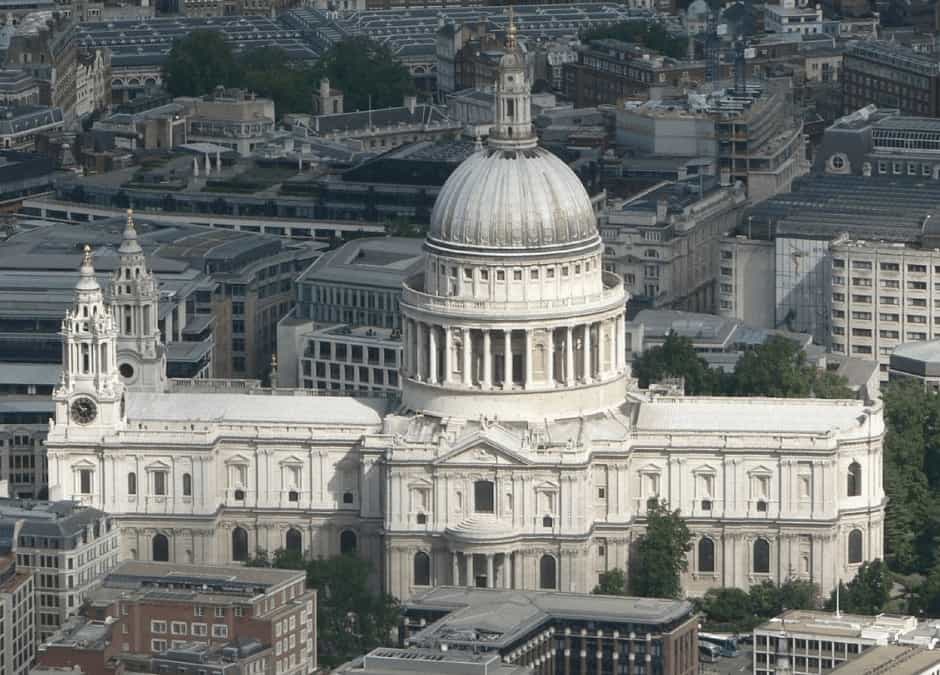
9. The Shard
The Shard is the most recent of the famous buildings in London on our list, and it’s also the tallest skyscraper in the city, standing 1,016 feet (309.6 meters) tall.
This ensures it’s a prominent landmark that can be seen from just about anywhere in the city center.
It’s located in the Southwark Borough, just south of the City of London bordering the River Thames on the other side.
It was designed by Italian architect Renzo Piano, famously known for his work on the Centre Pompidou in Paris, and was built in the Neo-Futuristic style.
The Shard was completed in 2012 and its design was meant to resemble the spire of a cathedral rising out of the Rover Thames.
This would eventually make it blend in with the historical buildings it’s surrounded by, of which this towering structure provides astounding views.
Official website: The Shard
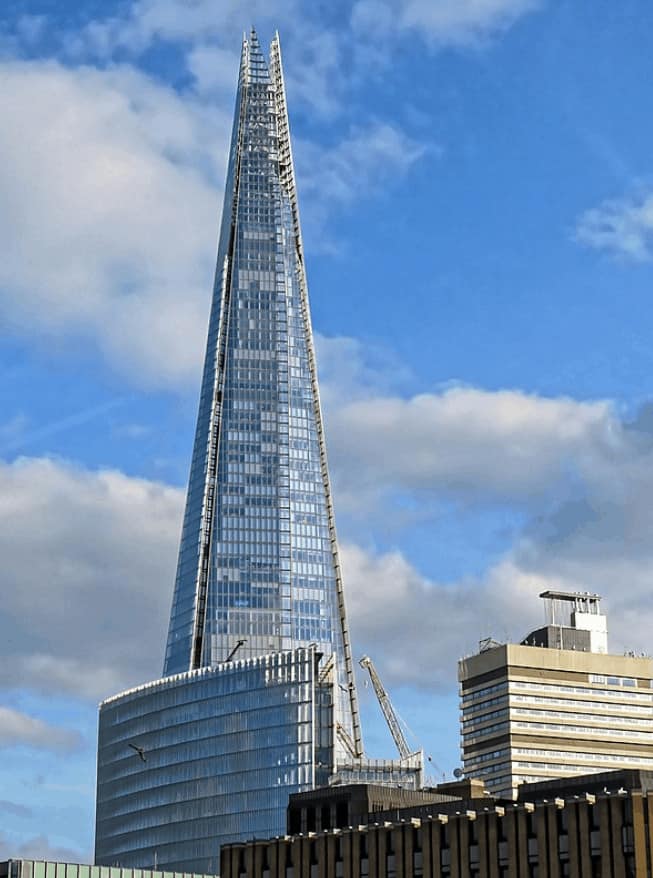
10. The Gherkin
The Gherkin is officially known as 30 St Mary Axe and is another recent building that was completed in the year 2004.
It’s one of the most remarkable skyscrapers in the city and has become one of the most iconic buildings in London.
The building was constructed on the former sites of the Baltic Exchange and Chamber of Shipping.
These structures were severely damaged by the Baltic Exchange Bombing of 1992 when the Provisional IRA set off a bomb in St Mary Axe, the street the buildings were located in.
The Gherkin has 41 floors and stands 591 feet (180 meters) tall. It was designed by world-renowned architect Norman Foster.
It really creates a unique atmosphere as it’s a futuristic skyscraper that is located in a city full of historical buildings.
Official website: The Gherkin
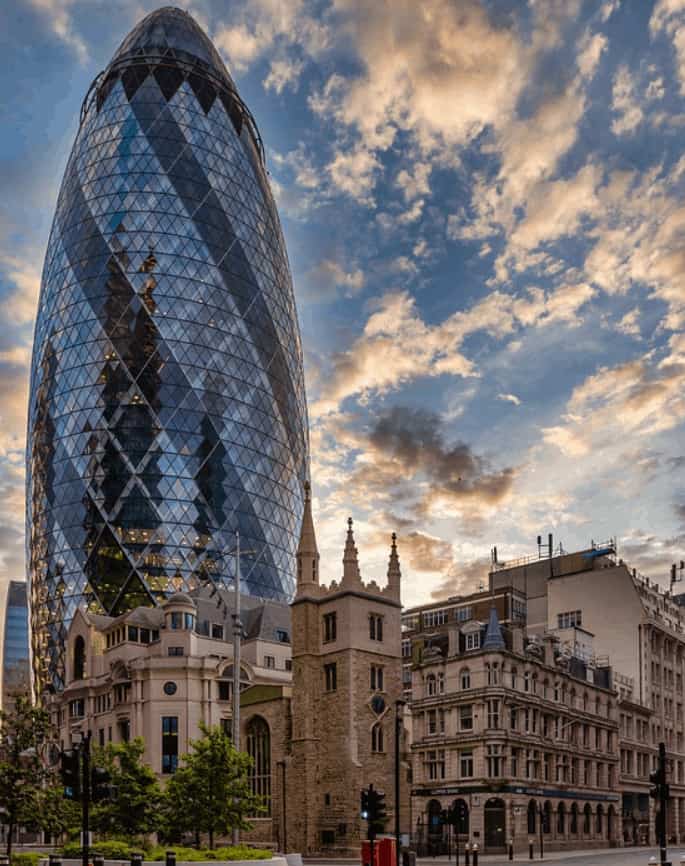
11. The British Museum
The British Museum is one of the biggest museums in the world and has an astounding 8 million works of art in its permanent collection.
Most of this collection was amassed during the glory days of the British Empire and contains works from all corners of the world.
The museum was established in the year 1753 and started with displaying the collection of Irish physician and scientist Sir Hans Sloane.
Over the course of the following two and a half centuries, the collection has been continuously expanded.
The British Museum was the first public museum in the world and has become one of the most popular tourist attractions in the United Kingdom.
It welcomes nearly 7 million visitors every year, making it one of the biggest museums in the world as well, making it a must-visit place during your stay in London.
Official website: British Museum
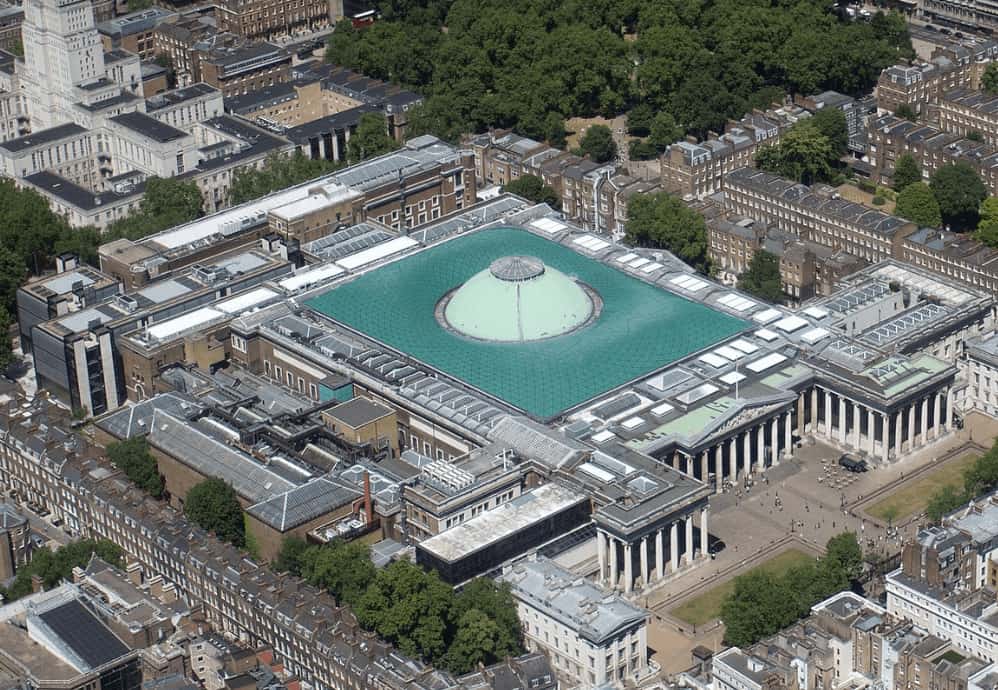
12. Marble Arch
Marble Arch is a famous triumphal arch that is now located on the northeast corner of Hyde Park at Cumberland Gate.
We say now because it was originally located right in front of Buckingham Palace and formed the triumphal entrance of the palace’s courtyard.
It was originally commissioned by King George IV in 1827 and was completed by his successor King William IV, albeit on a much smaller scale than what King George IV originally had in mind.
The arch was eventually completed in the year 1833.
It stood majestically in front of Buckingham Palace for 14 years until it was moved to its current location following the expansion of the palace with the famous east wing.
The arch in London finds itself isolated on a traffic island since the widening of Park Lane in the 1960s and is a remarkable sight when you’re taking a walk in London.
Official website: Marble Arch London

13. Westminster Bridge
Westminster Bridge is another iconic bridge in the center of London which links the City of Westminster on the west bank of the River Thames with Lambeth on the east side.
The original bridge on the location dates back to the year 1750.
The current bridge was completed in the year 1862 and is located in one of the most iconic places in London near the Palace of Westminster and its world-famous clock tower Big Ben.
One of the most remarkable facts about Westminster Bridge is that it’s not a coincidence that it was painted green.
This resembles the color of the seats in the House of Commons on which side it is located.
A bridge a bit further upstream, the Lambeth Bridge, was painted in red to resemble the color of the seats in the House of Lords.
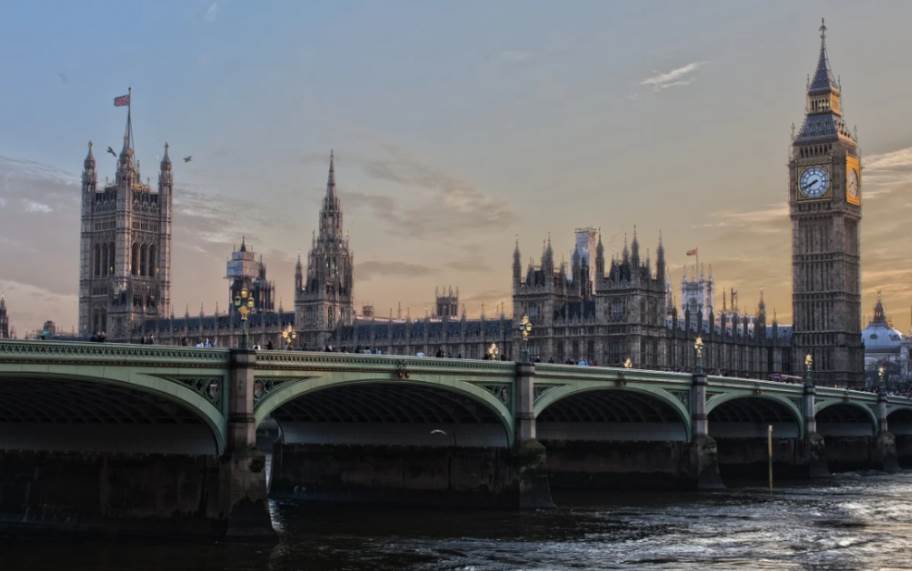
14. BT Tower
The BT Tower is arguably the most famous tower in all of London.
It’s located in the Fitzrovia district in the center of the city and can easily be recognized by its remarkable design featuring an entire section of aerial rigging.
It was constructed between 1961 and 1964 and was commissioned by the General Post Office to serve as a telecommunications tower.
It was also previously known as the British Telecom Tower and even the Post Office Tower and is currently owned by the BT Group.
The tower stands 189 meters (620.1 feet) tall and originally featured an observation deck but this was closed in the year 1980.
It only serves as a telecommunications tower today and is still considered one of the major UK communications hubs.
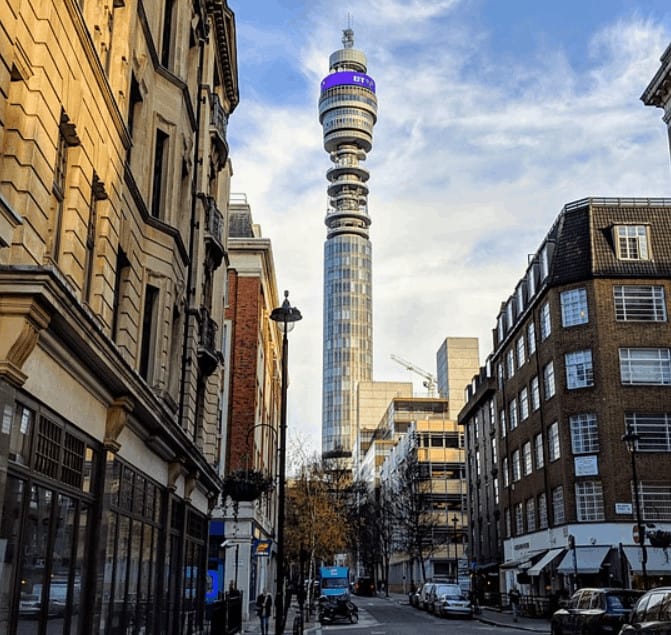
15. Wembley Stadium
Wembley Stadium is one of the biggest stadiums in the world with a seating capacity of 90,000 for association football and rugby matches.
It’s located in the town of Wembley in northwest London and was built on the site of the demolished Old Wembley Stadium that has stood here since 1923.
The stadium was finally completed in the year 2007 after construction had started in 2002 and was designed by American multinational architectural firm Populous.
This was a collaboration with Foster and Partners, a firm owned by renowned British architect Norman Foster.
The most astounding feature of the stadium is the so-called “Wembley Arch,” a structural feature of the roof which reaches a height of 134 meters (440 feet).
This remarkable arch supports 75% of the entire roof and has become one of the most fascinating landmarks in London.
Official website: Wembley Stadium
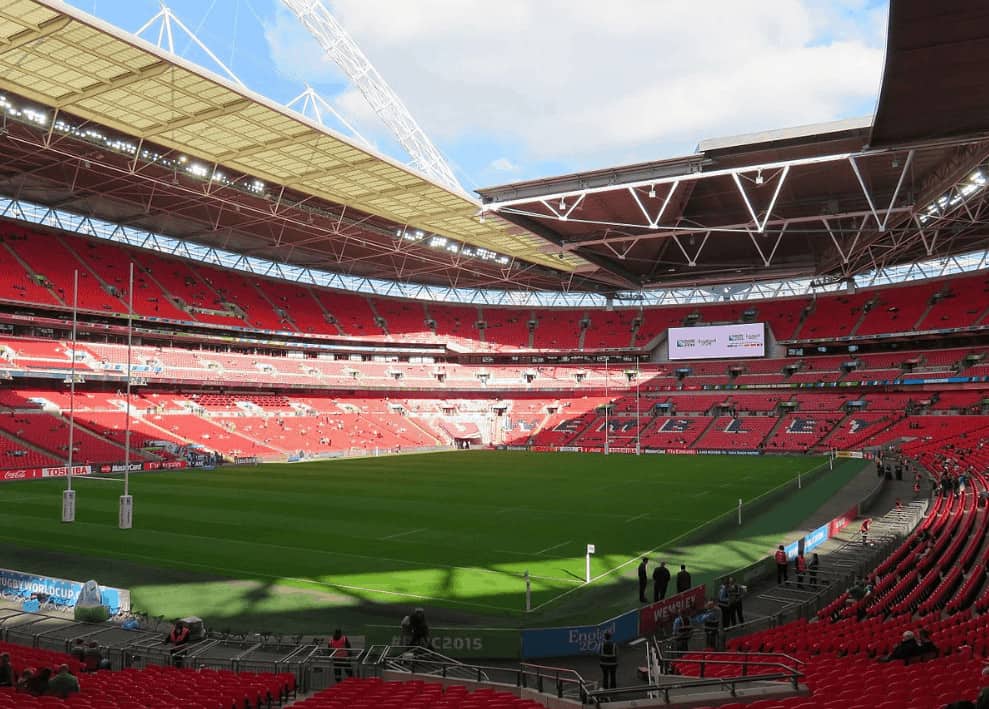
16. Millennium Bridge
The Millennium Bridge, officially known as the “London Millennium Footbridge,” is a pedestrian bridge right in the historical heart of London.
This suspension bridge crosses the River Thames and connects the Bankside District of central London with the City of London.
As the name suggests, it was built in honor of the new Millennium and construction started in 1998.
It also officially opened in June of the year 2000 but this turned out to be a fiasco due to a structural problem.
The bridge was quickly referred to as the “Wobbly Bridge” and was closed the same day, only to be permanently closed two days later for nearly two years until the problem was resolved.
It reopened in February 2002 and we are happy to mention that there haven’t been serious problems with the bridge since.
Walking towards St Paul’s Cathedral from the bridge is an amazing experience in London.
Official website: Millennium Bridge

17. London Eye
The London Eye also referred to as the “Millennium Wheel,” is another attraction in central London that was constructed in honor of the new Millennium.
It’s located on the east bank of the River Thames across from the City of Westminster and other famous landmarks in London such as Big Ben and the Palace of Westminster.
This enormous Ferris wheel has a total height of 135 meters (443 feet) which makes it the tallest cantilevered observation wheel in Europe.
It was also the world’s tallest Ferris wheel upon completion in the late 20th century but has since been surpassed by some other similar structures
These are the 165 meters (541 feet) Singapore Flyer in 2008 and the 167 meters (548 ft) High Roller (Las Vegas) in 2014.
Because of the fantastic views this observation wheel offers of the City of London it has become one of the most popular tourist attractions in the city, welcoming about 3 million yearly visitors.
Official website: London Eye

18. Victoria Tower
The Victoria Tower is a neo-Gothic tower located on the southwest end of the Palace of Westminster, which is right across Big Ben.
Even though its counterpart on the other end is world-famous, the Victoria Tower is slightly taller than the Elizabeth Tower at 98.5 meters (323 feet).
Upon completion in the year 1860, it was the tallest square tower in the world as well.
It was designed by the architect of the Palace of Westminster, Sir Charles Barry, and it houses the Parliamentary Archives.
The main entrance of the tower is used by the reigning monarch at the State Opening of Parliament and is therefore referred to as the “Sovereign’s Entrance.”
Official website: The Victoria Tower
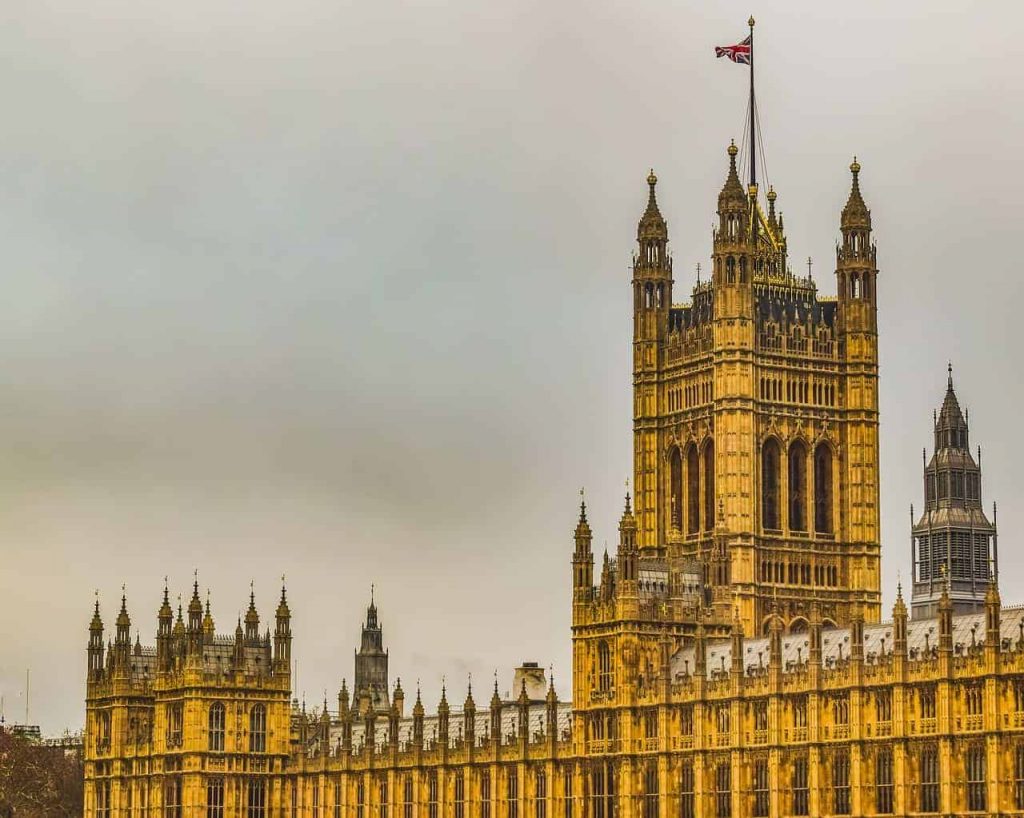
19. Twickenham Stadium
Twickenham Stadium is another remarkable stadium in London because it was built for the sport of rugby union.
It’s owned by the Rugby Football Union and the main tenant of the stadium is England national rugby union team.
With a total seating capacity of 82,000 spectators, it’s the largest rugby union-specific stadium in the world.
It’s also the second-largest stadium in the United Kingdom behind Wembley Stadium and the 4th-largest in Europe.
It’s also used as the headquarters of the Rugby Football Union (RFU), the main governing body of the sport.
The other main purpose of the stadium is to serve as a venue for concerts. Some of the most famous artists in the world have performed here since 2003.
Official website: Twickenham Stadium

20. Kensington Palace
Kensington Palace is a prominent royal residence located within the Royal Borough of Kensington and Chelsea, just west of the City of Westminster in central London.
It has served its purpose as a residence of the British Royal Family ever since the 17th century.
The original structure on the ground was a simple two-story mansion which was later bought and expanded by Heneage Finch, 1st Earl of Nottingham.
Therefore, it was known throughout the 17th century as the “Nottingham House.”
It wasn’t until William III and Mary II ascended to the throne in 1689 that the property was acquired by the reigning monarchs and turned into a palace to be used as their official residence.
Today, part of the palace, including the State Rooms, is open to the public and is one of the most famous buildings in London.
Official website: Kensington Palace
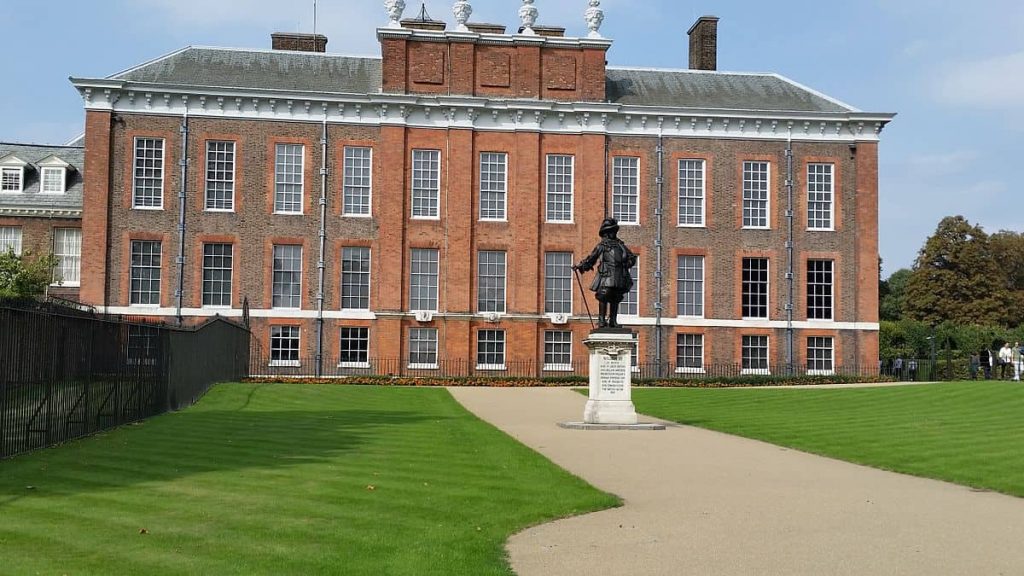
21. Nelson’s Column
Nelson’s Column is a monument located on Trafalgar Square in the City of Westminster.
It was built to commemorate Admiral Horatio Nelson who had died during the Battle of Trafalgar off the coast of Spain, a battle fought between the British Royal Navy and the combined fleet of the French and Spanish armies.
Even though the battle was fought in 1805, the monument wasn’t erected until the newly constructed Trafalgar Square was completed between 1840 and 1843
It has been the most prominent landmark in the area ever since and one of the most famous tourist spots in London.
The Corinthian Column is topped with a statue of Admiral Nelson and stands exactly 51.59 meters (169. feet) tall.
The pedestal is decorated with bronze reliefs that depict important moments in the life of Nelson.
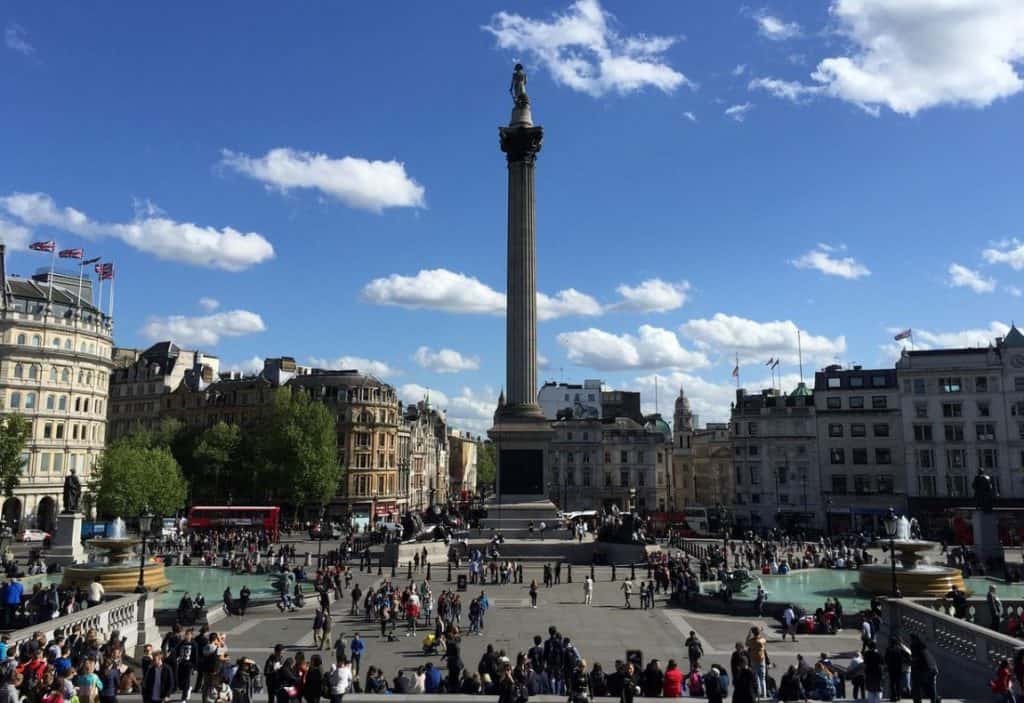
22. London Bridge
London Bridge is not to be confused with Tower Bridge as it’s far from the most spectacular bridge in the city, but it’s the oldest one.
Many bridges have spanned the River in this location connecting the City of London and Southwark
The Romans installed a pontoon bridge here to allow their army to cross the river followed by multiple Medieval bridges and one referred to as the “Old London Bridge” (1209-1831).
The current bridge was opened for traffic in 1973 and is a box and girder bridge and one of the busiest in the city.
It’s also the inspiration for the famous nursery rhyme “London Bridge Is Falling Down.”
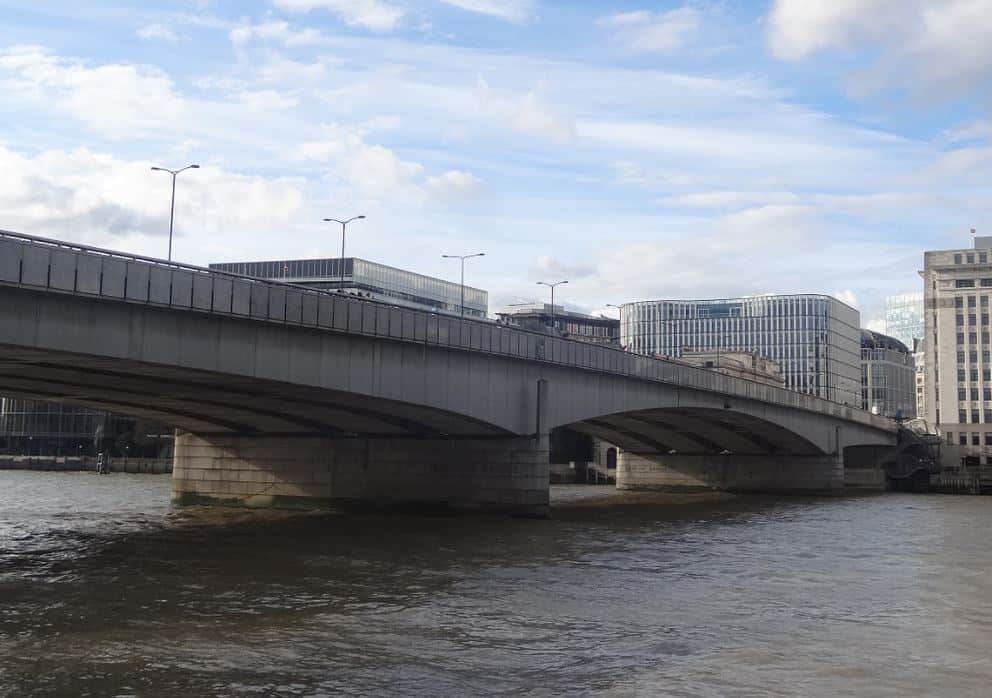
23. Windsor Castle
Windsor Castle is located just outside of London in the town of Windsor, a historic market town in the English county of Berkshire just west of the city.
It’s another structure that is owned by the British monarch in the right of the Crown.
The original castle was built shortly after the Norman Conquest of England in the year 1066 by William the Conqueror himself as one of the fortifications in the London area.
It was originally built as a motte-and-bailey castle and was seriously expanded over the centuries.
Today, the castle and its surroundings are one of the most popular tourist attractions in the United Kingdom
It is also frequently used as a venue for state visits, as well as a weekend home for the Royal family.
Official website: Windsor Castle
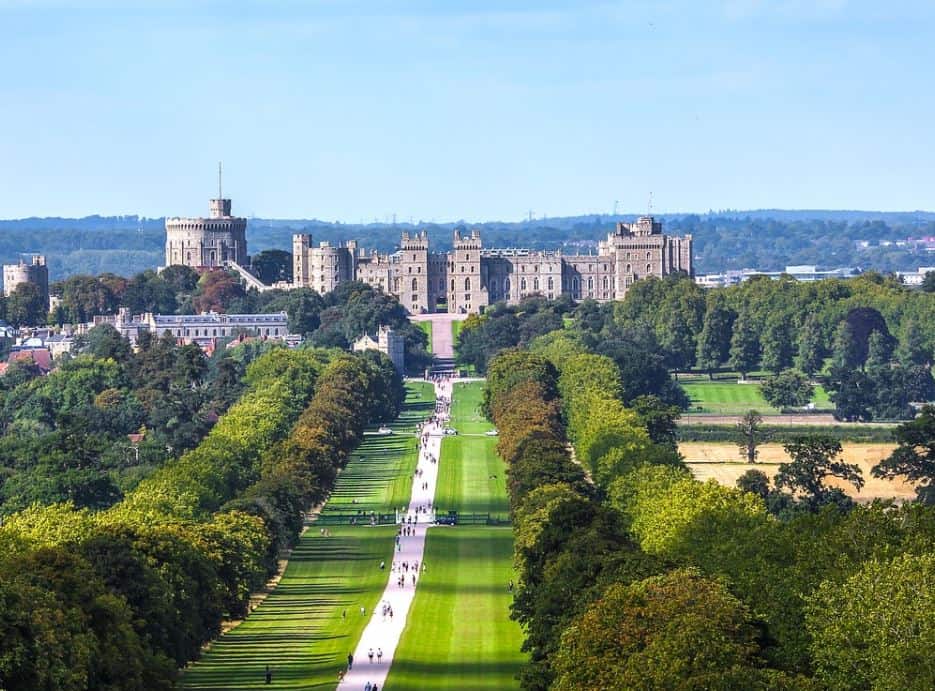
24. The Walkie-Talkie Building
20 Fenchurch Street, also referred to as the “Walkie-Talkie Building,” is one of the most fascinating buildings in London.
The main reason is the peculiar shape of the skyscraper which resembles this hand-held portable device.
This Neo-futuristic building is located in the historic City of London financial district and stands 160 meters (525 feet) tall. It was designed by renowned Uruguayan architect Rafael Viñoly.
The man is best known for 432 Park Avenue in New York (2015) and the Tokyo International Forum (1996), and even though it’s one of the most fascinating structures in the city, it received the Carbuncle Cup in 2015
This “award” was given to the worst new building in the UK in the previous 12 months, not exactly a major honor.
The building does, however, feature a popular attraction you can visit known as the “Sky Garden,” an observation deck at the top that is free to access as well.
Official website: Sky Garden London
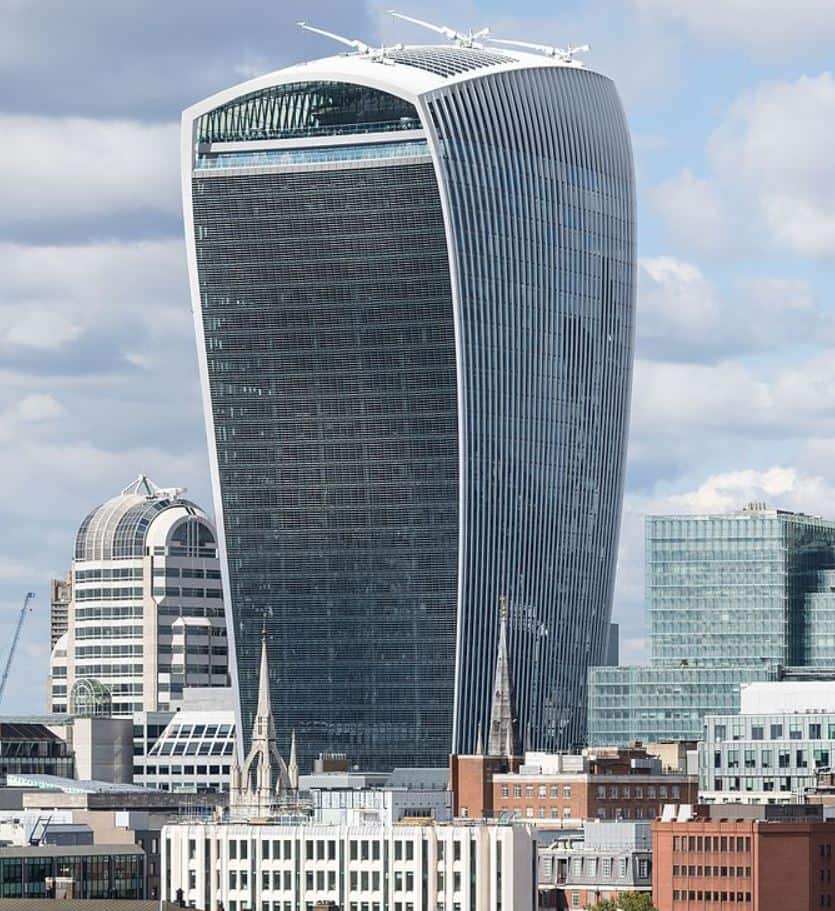
25. Somerset House
Somerset House is an enormous neoclassical building overlooking the River Thames in central London.
It’s situated on the south side of the Strand, a major thoroughfare in the City of Westminster.
The building was originally constructed in the year 1776 and continuously expanded in the 18th and 19th centuries with Victorian outer wings.
Its original purpose was to house a wide variety of government and public-benefit offices.
Today, the building serves this purpose as its the home of several organizations related to arts and education.
It also serves as a popular film location for big Hollywood productions, especially the immense courtyard of the building.
Official website: Somerset House
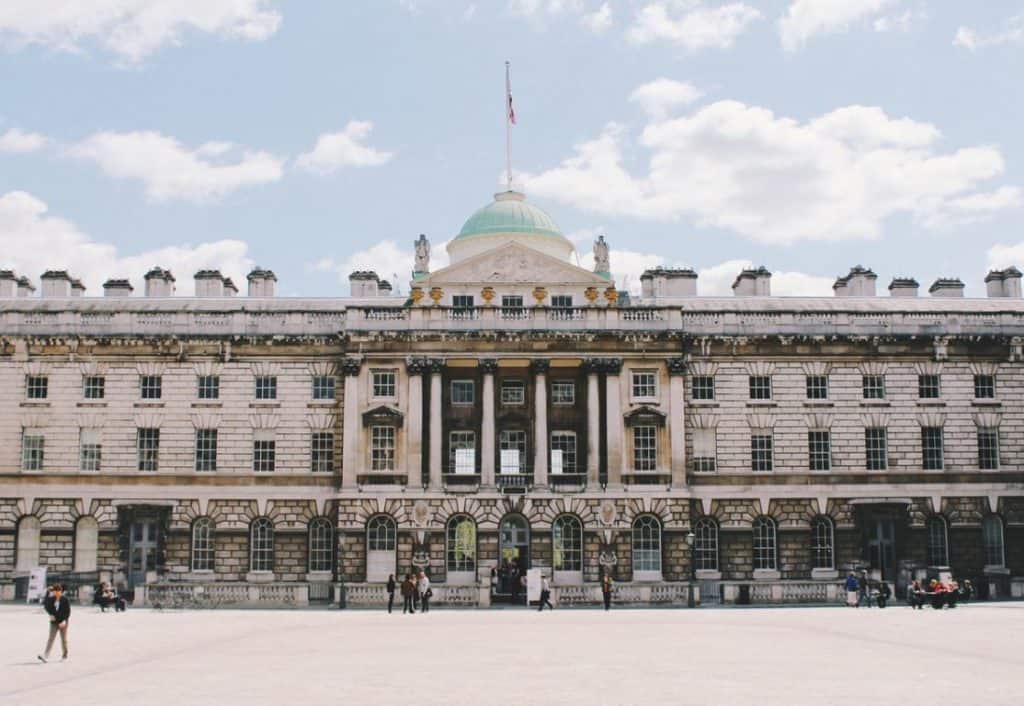
26. Burlington Arcade
The Burlington Arcade is a historic shopping gallery and one of the first covered shopping arcades that were constructed in London.
It serves as the main inspiration for similar arcades in the city and has a history that goes back over 2 centuries ago.
It was commissioned by George Cavendish, 1st Earl of Burlington (1754-1834) in 1818 and it first opened its doors to the public on March 20, 1819.
Today, this historic building in London is home to approximately 40 upscale clothing and footwear stores, as well as jewelers and precious metal dealers.
Official website: Burlington Arcade
